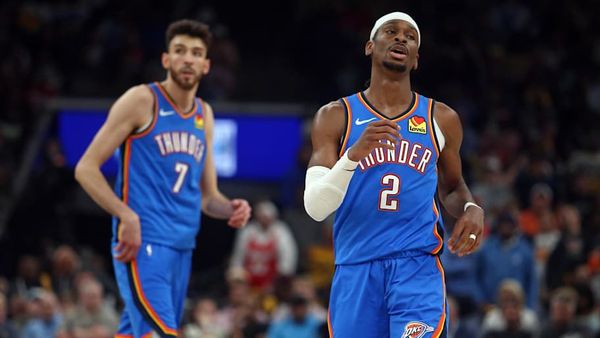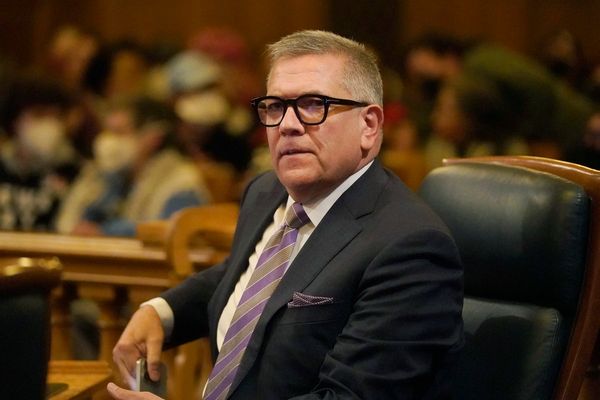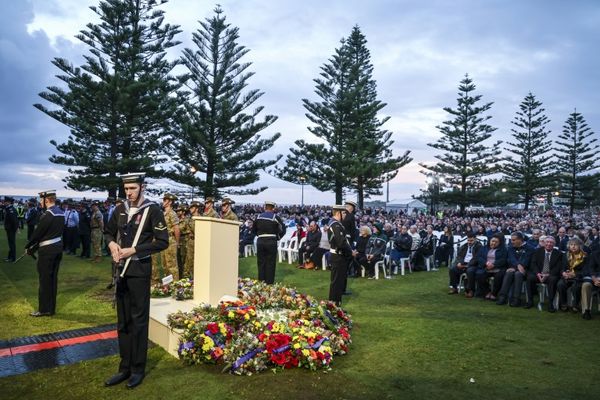
His hands-off approach to the production of his famous balloon dogs and stainless steel rabbits has been criticised in the past but Jeff Koons, the world’s most expensive artist, has drawn a red-line: “I wouldn’t – for my own base work – be looking at AI to be developing my work.”
The potential and the risks of artificial intelligence is perhaps the hottest topic in the artistic world, with deep-learning models now able to replicate styles and produce unique compositions on request.
It would appear to be a heaven-sent development for Koons, who was speaking to the Guardian at the launch of Reflections, a joint exhibition of his works alongside those of Pablo Picasso at the Alhambra in Granada. Koons’s reliance on teams of craftspeople and cutting-edge technology in the making of his pieces prompted the Collector magazine last year to ask: “Is Jeff Koons an actual artist?”
Exploiting technological advances is what he does. Five years ago, the American’s highly mirror-polished stainless steel Rabbit, made by intensive machine-work to imitate the look and material of a balloon, sold for a record $91m (£72.5m). His previous bestseller, the 10ft-tall steel Balloon Dog, sold for $58m in 2013. A SpaceX rocket took 125 of his miniature lunar sculptures out of the Earth’s orbit in February, to become the first authorised artworks on the moon.
For his Gazing Ball series, in which masterpieces were reproduced but with the addition of a large, blue glass bauble on a shelf, he commissioned 350 of the balls before choosing the best 35. He is also an innovator. “There are certain projects I’m thinking about,” he disclosed. “I have a wonderful dialogue with people that are involved in the core of the development of AI.”
But AI appears likely to remain on the periphery of what he does. “I enjoy where my core of my work comes from – my reflection on everything that has any meaning to me,” he said. “I do not work with AI at this time directly other than to produce options. Here’s this table: could I see this table in a wood? And then, could I see this shape in, you know, a marble? I’d like to see it in reflected steel. Only in that scenario. I’ve been using AI as a tool, not as an agent.
“Now, people speak very much about AI at this moment, being an agent in that it has its own, you know, thoughts, its own ability to create, and I’m sure that at some point that I will be moving in that direction in some manner, but I’m very embedded at this moment in biology.”
He added: “I met a Nobel prize winner one time, and we were talking about life, and he said that, ‘You know, life is just an animated chemical chain reaction.’ And I thought that was so beautiful that I all sudden I felt like I really understood what I’m experiencing, that it’s just an illusion, that it’s just the animation.
“But I believe very much in this process, this biological process, and the senses: the sense of sight and touch and feeling … I don’t want to be lazy in the back seat.”
A Say No to AI Art Movement has emerged in recent months, with advocates voicing particular concern about image generators that steal artwork and art styles from existing artists without their permission and without credit. Others warn that AI could replace humans as creators.
Koons, a month from his 70th birthday, said he was not overly concerned. The invention of photography in the 1800s was seen by some as the antithesis of an artist, but instead of replacing painting it led to a move away from realism towards abstraction.
“I think that if AI is able to become that type of agent, we will be able to understand, work with it, in some manner, to benefit ourselves,” he said. “Or it will have us look at our senses, which are probably lying relatively dormant. We like to think that we’re using our senses to their fullest ability, but we probably have become lazy to a certain degree, and we could only enhance that.
“Throughout history, we have always been confronted by technologies that have been enlightening and that have been very, very powerful, and they change the moment we’re living in, and they change our future. But I embrace this.”
Koons was speaking in an ante room within the eighth wonder of the world, the Alhambra fortress complex, where three of his pieces – Three Graces, Gazing Ball (David Intervention of the Sabine Women) and Gazing Ball (Standing Woman) – are on display until 16 March alongside Picasso’s hand-drawn The Three Graces of 1923 and his 1933 Head With Helmet, and the palace’s own renaissance collection.
With an estimated fortune of $400m, it is said that Koons is the world’s richest living artist. He is a Picasso collector, and two of his favourites are displayed in the library and billiard room of his 21,726 sq ft New York mansion.
“There have been moments in my life where, you know, there’s been a kind of an abundance, and you know, coming from art, if I had an abundance, I acquired some pieces,” he said.
Impeccably turned out in suit, tie and blue trainers, and unfailingly polite, Koons had travelled to the Alhambra with his wife, Justine, an artist and the mother of six of his eight children, who are aged between 14 and 49, for the exhibition put on by the Museo Picasso Málaga in the Alhambra’s Palace of Charles V.
It had taken two days to move Koons’s reflective 1.8-tonne Three Graces a few hundred yards to a niche in the palace’s inner circular patio and a further day to unpack it from its crate and place it on a 1.2-tonne plinth. The initial plan to place the giant work with the others in a room on the first floor had to be abandoned owing to its weight, but Koons said he was delighted by the somewhat-accidental results.
He said: “In this exhibition we really have kind of three elements: we have Picasso, we have myself, and we have the collection of the museum. And within the salon it’s like three different elements, but when you add them, it creates kind of everything. It just doesn’t add up to three. And that’s the creative ability that biology gives us, this ability to make more out of something. And to this moment, AI hasn’t done that.”
• The exhibition Reflections. Picasso/Koons at the Alhambra will run until 16 March 2025







